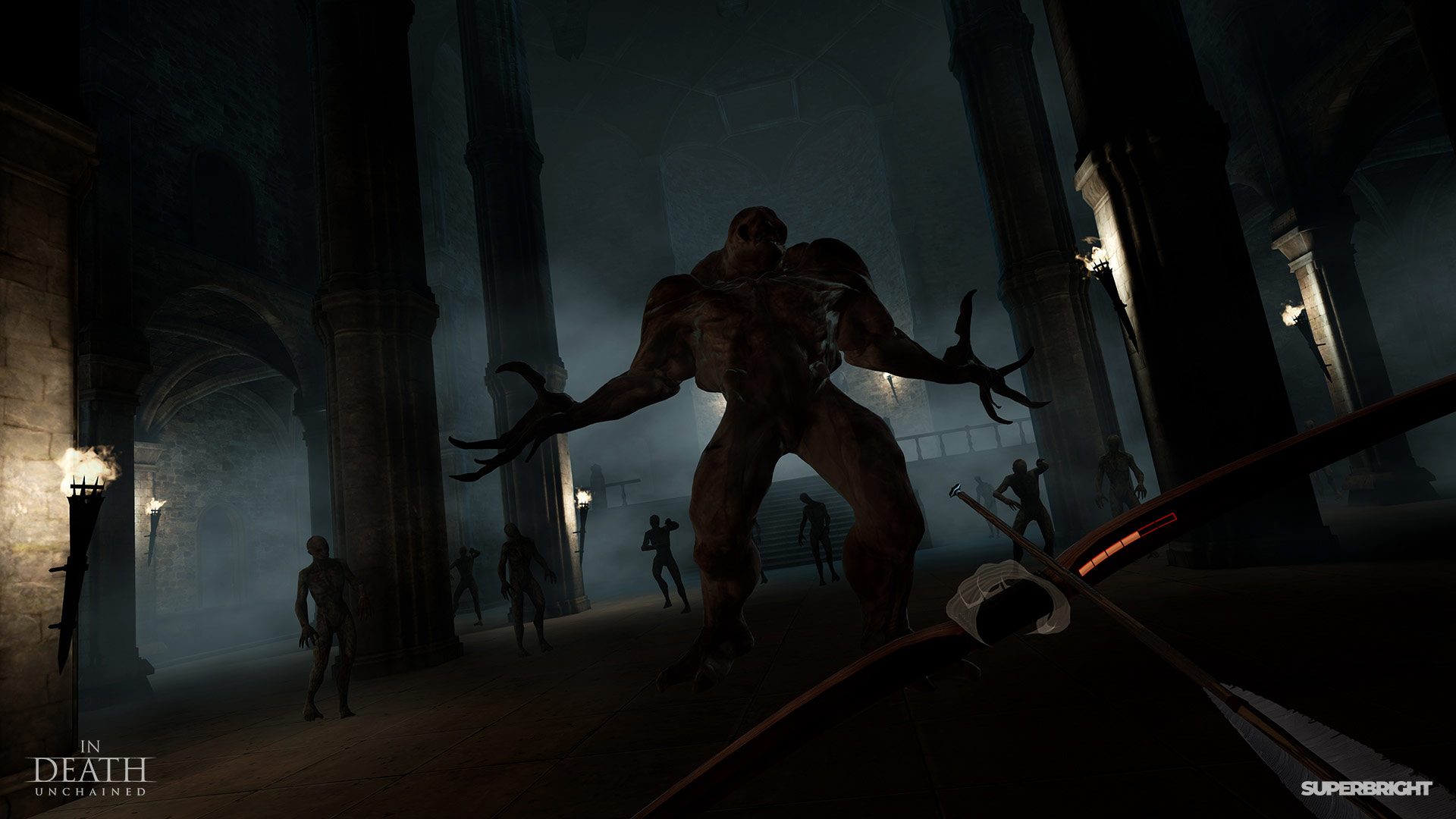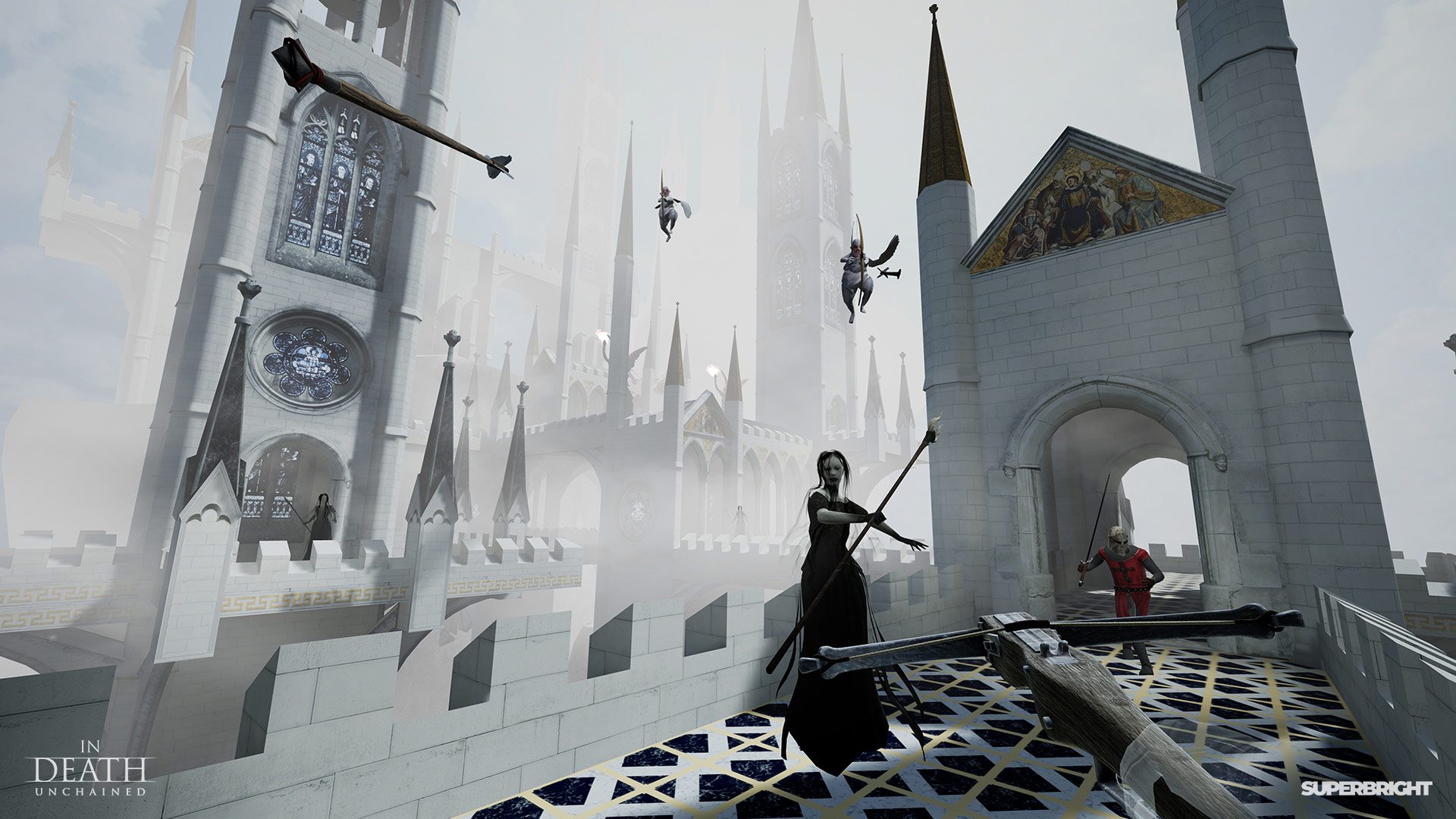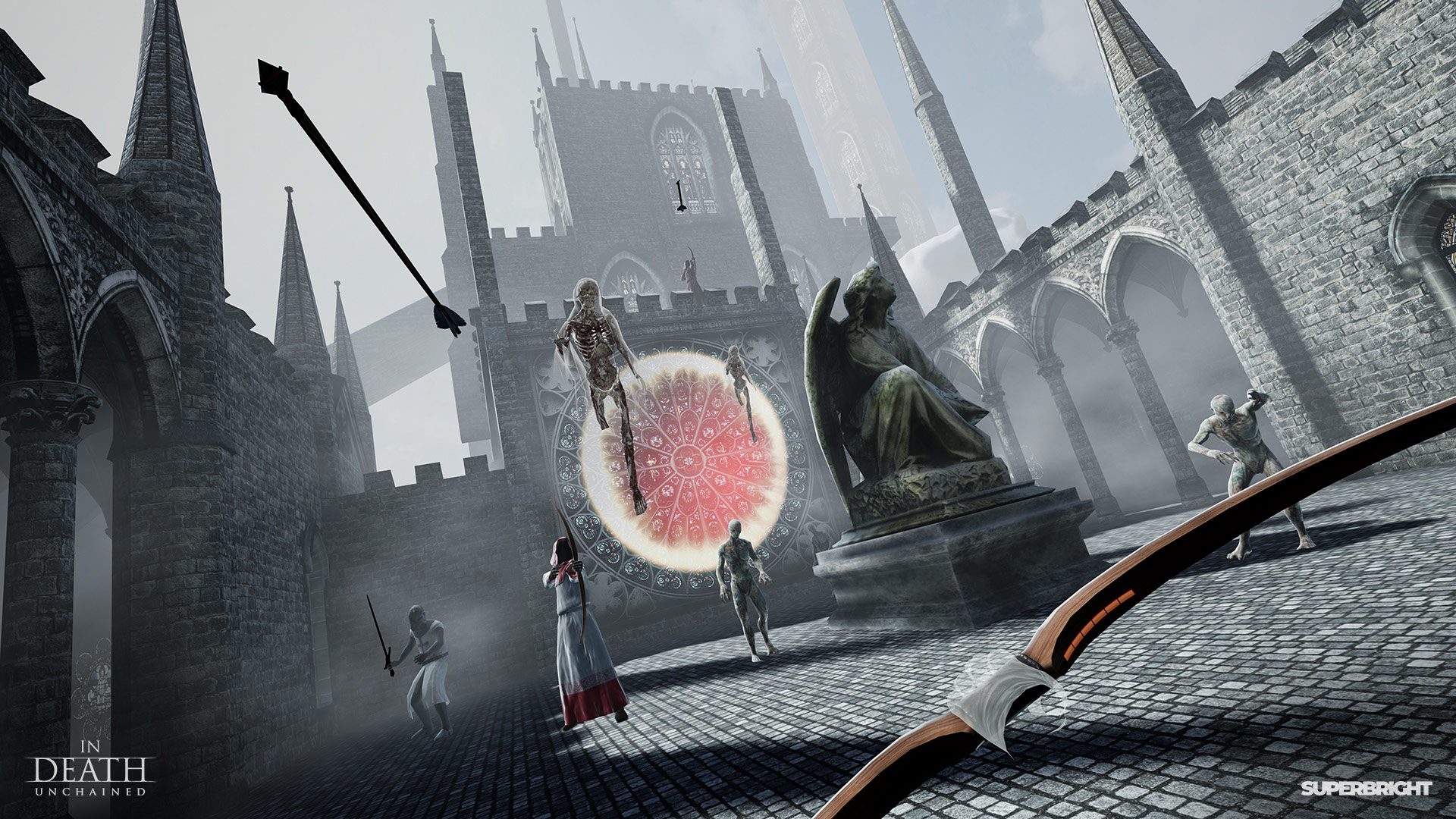With a few caveats, In Death: Unchained is basically the same experience you can have on SteamVR headsets and PSVR with its forebear In Death (2018), which we gave a respectable [8/10] for the PC VR platform. Two years have passed since it launched out of Early Access on PC, and most of the positives are reflected in the new, Quest-exclusive version of the game. It would be a sin to say it’s the exact same game though. While Unchained inevitably bucks against inside-out tracking capabilities of Quest, you’re still sure to have a fun time experiencing the roguelike bow-shooter’s specific flavor of abject failure.
In Death: Unchained Details:
Developer: Superbright
Available On: Oculus Quest
Release Date: July 23rd, 2020
Price: $30
Gameplay
If you haven’t played In Death on any other platform, you’re in for a death march that, depending on your personality type, might actually just be a guilty pleasure. It’s a difficult game that rewards perseverance with new, more deadly ammo upgrades, gold for the spending, and all the achievements you can shake a bow at. Like all roguelike games, you’ll die and die again—if only to feel alive.

The procedurally generated game is brutally unforgiving. In Death offers up three different levels—Purgatory, Paradise Lost, and the new addition to the game, a Hell-like realm called Abyss. After one lap around all three levels you’re then served up the Sisyphean task of entering Purgatory II, where you’ll again duel against increasingly difficult enemies. You continue on to Paradise Lost II, Abyss II, Purgatory III, etc – until you either die in the game, or the Universe experiences heat death—whichever one comes first.
Outside of the game’s intelligent mix of ground and air-type enemies, three devilish bosses will put your resolve to the test. Dying even once will put an end to your run, so make sure you have all of your best ammo on hand. Thankfully there are a few save spots to help lower your time commitment to each play session, however once you’re dead, you’re back to square one, albeit with new unlocked upgrades and enemies to match. It’s a fun, if not excessively punishing game with just enough reason to come back for more each time you progress (aka fail).

I’m going to come out and say it: In Death obviously wasn’t conceived for the inside-out-tracked generation of Oculus headsets of today. Archery games rely on the ability of the VR headset to accurately resolve the user’s dominant hand at a naturally close distance to the user’s face, which is something the original 2016 Rift and SteamVR-tracked headsets are capable of doing with relative ease.
Holding your hand either too close to Quest’s camera sensor or just outside their field of view results in your dominant hand either locking in place as the controller is no longer tracked, or wigging out as the headset tries to make sense of the controller’s position relative to your face. Your shot will be inconsistent in either case, requiring you to intentionally alter your shooting style—lest you suffer the slings and arrows of a demon’s maleficent retribution, something you might not notice as you hammer away at a room full of enemy archers. Bow-shooting is one of the most challenging game types for the Quest to accommodate. In spite of this, In Death: Unchained still manages to deliver a well-rounded gaming experience, as it replicates the action on other headsets to admirable effect.

What about the crossbow, you say? True, the game’s crossbow does sidestep the tracking volume issue, since you’re basically using a manual gun and not a bow that requires a wide draw. I won’t weigh in for either camp, but In Death’s long-term player base is still conflicted over whether the crossbow elevates or diminishes the overall experience.
To hardcore In Death players, the leaderboard is the only thing that matters, and even after a few hours since the game has gone live, crossbow players have topped the global charts in user points. That said, the crossbow makes a good deal of sense on Quest, as you’re afforded a near perfect 1:1 gaming experience across all platforms. It’s also pretty satisfying to gank a crowd of ghoulies with a rapid fire reload technique.
Immersion
The PC VR version of the game reigns as graphical champion, and while the Quest port has predictably lowered the fidelity to fit on a mobile chipset, it still offers up a game that feels mostly all there graphically speaking. If I had to nitpick, Unchained presents a much more ‘cloudy’ rendering distance, making it harder to resolve enemies for long-distance shots. Most of your combat will be fairly close quarters, so it’s not really a problem at the forefront.

The controls aren’t entirely intuitive; you may have to go through the full set of buttons to just grab a health chalice or new arrow type, but it’s something you eventually develop the muscle memory for.
As we mentioned in our review of the game on PC, the game’s beautiful Gothic architecture of church steeples, monastic courtyards and long bridges make for impressive scenery.
Comfort
In Death was first designed to include teleportation only, and while it makes sense from a comfort standpoint to play exclusively by using either the teleport arrow or handheld teleport shard, the developers have also added in smooth locomotion and variable snap-turn.
Smooth locomotion is set at a slow, plodding pace, although the game’s expectation of constant dodging and resultant lateral movement may be somewhat uncomfortable for extended periods.
The biggest comfort upgrade, if you can call it that, is definitely the game’s ‘unchained’ nature. It feels awesome to finally go without cables so you can fully explore your ability to dodge incoming arrows and crouch down behind barriers. It’s easy to lose your original tracking area, so make sure your Guardian is on and calibrated correctly.
Still, the game can be played seated mode, although you’ll definitely need a good range of movement for both hands since shooting a reloading is so involved.







